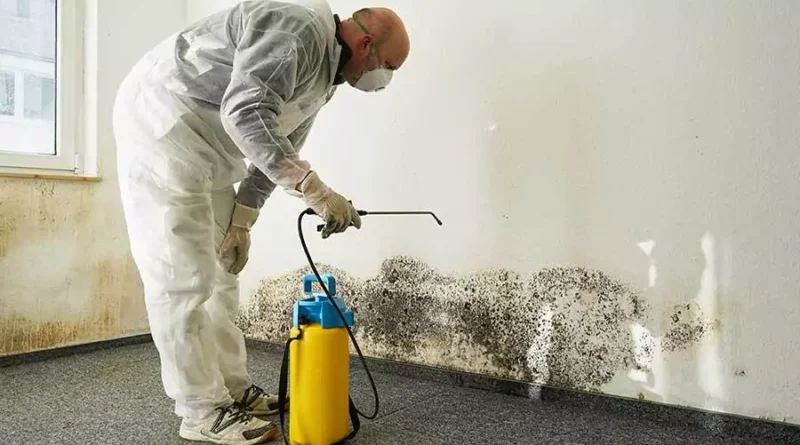Mold Inspection: Protecting Your Home from Hidden Dangers
When you think of home maintenance, a lot of things come to mind—fresh paint, regular cleaning, and maybe even the occasional roof check. But have you ever considered mold inspection? Mold can be a sneaky adversary lurking in the corners of your home, posing serious health risks and damaging your property. Let’s dive into why mold inspection is vital for protecting your home and how you can tackle this hidden danger.
What is Mold and Why is it a Problem?
Mold is a type of fungus that thrives in damp, humid environments. While some mold is harmless, others can be incredibly detrimental to both your health and the integrity of your home. Mold spores are everywhere—inside and outside. They can become a problem when they land on wet or damp surfaces and begin to grow.
The Health Risks Associated with Mold
Exposure to mold can lead to a variety of health issues. Common symptoms include:
- Allergic Reactions: Sneezing, runny nose, and skin rashes can arise from mold exposure, particularly for individuals with mold allergies.
- Respiratory Problems: Mold can irritate the lungs and lead to coughing, wheezing, and shortness of breath, especially in people with asthma or other respiratory conditions.
- Toxic Reactions: Certain types of mold produce mycotoxins, which can lead to more severe health problems, including neurological issues.
Understanding these health risks emphasizes the importance of mold inspection to keep your living space safe.
Signs You Need a Mold Inspection
Sometimes, mold is easy to spot, but it can also hide in places you might not think to look. Here are some signs that indicate a need for mold inspection:
Visible Mold Growth
If you see black, green, or white patches on your walls, ceilings, or floors, it’s time to take action. These visible signs are often the tip of the iceberg, indicating a larger problem.
Musty Odors
A persistent musty smell can be a clear indicator of mold growth. If your home smells damp or earthy, don’t ignore it. This odor often signals that mold is lurking somewhere nearby.
Water Damage
If you’ve experienced water damage due to a leak or flooding, there’s a high chance that mold has taken root. Even small leaks can create a breeding ground for mold, so don’t wait for visible signs to appear.
Increased Allergies
If you or your family members are experiencing unexplained allergic reactions, it might be due to hidden mold. A sudden spike in respiratory issues during certain seasons can also be a red flag.
The Mold Inspection Process
Understanding how mold inspection works can help you prepare for the process and know what to expect.
Initial Assessment
During an initial assessment, a mold inspector will examine your home for visible signs of mold, moisture issues, and potential risk areas. They may ask about past water damage and health symptoms to gauge the situation better.
Air Quality Testing
This is a crucial part of the mold inspection process. Inspectors will take air samples to measure the concentration of mold spores in your home. High levels can indicate that mold is present, even if it’s not visible.
Surface Testing
In addition to air quality testing, inspectors often conduct surface tests. This involves swabbing suspected areas to collect samples, which are then analyzed in a lab to identify the type of mold present.
Report and Recommendations
Once the inspection is complete, you’ll receive a report detailing the findings. This will include the type and extent of the mold problem, as well as recommendations for remediation.
How to Prepare for a Mold Inspection
If you’re considering a mold inspection, being prepared can help make the process smoother and more effective.
Declutter the Area
Before the inspection, take some time to declutter spaces, especially in areas prone to moisture, like basements and bathrooms. This makes it easier for the inspector to access potential problem areas.
Document Any Issues
Keep a record of any past water damage, leaks, or visible mold. This information will be invaluable to the inspector and can help them identify issues more quickly.
Be Ready to Ask Questions
During the inspection, don’t hesitate to ask questions. Understanding the process and the inspector’s findings can help you make informed decisions about remediation and prevention.
After the Mold Inspection: Next Steps
Once you’ve completed your mold inspection, it’s essential to take appropriate action based on the findings.
Remediation
If mold is found, remediation is the next step. This involves removing mold and fixing the underlying moisture issues. Depending on the extent of the infestation, you may need professional help to ensure the problem is thoroughly addressed.
Preventive Measures
After remediation, it’s vital to implement preventive measures to keep mold at bay. Here are some tips:
- Control Humidity: Use dehumidifiers in damp areas and ensure proper ventilation in bathrooms and kitchens.
- Regular Inspections: Schedule regular mold inspections to catch any potential issues before they escalate.
- Prompt Repairs: Address leaks and water damage immediately to prevent mold growth.
Conclusion
Mold may be hidden, but its dangers are all too real. Regular mold inspection is essential for protecting your home and your health. By being proactive and informed, you can ensure that your living space remains safe and comfortable. Don’t wait until mold becomes a significant issue—take steps now to safeguard your home from this silent threat. With the right knowledge and preparation, you can tackle mold head-on and create a healthier environment for you and your family.

